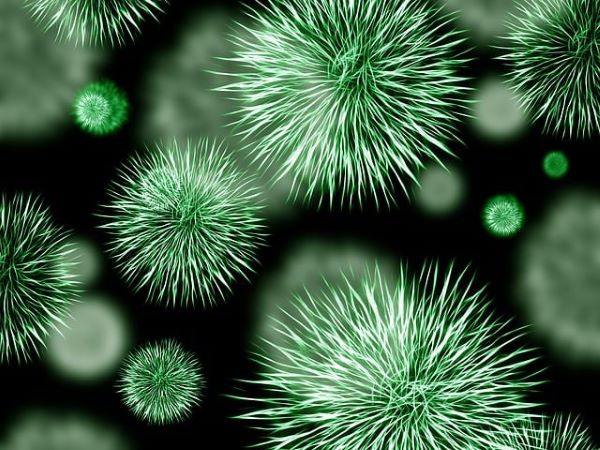The discovery of penicillin in 1928 represented a pinnacle of scientific achievement, providing powerful drugs that vanquished once-lethal bacterial infections. Today, that foundational pillar of modern medicine is cracking. We are facing a slow-moving but relentless pandemic known as Antimicrobial Resistance (AMR), which undermines the very core of modern medicine and poses an existential threat to global health, food security, and sustainable development.
AMR – Antimicrobial Resistance: The Next Global Health Crisis
Antimicrobial agents, such as antibiotics, antivirals, antifungals, and antiparasitics, are essential medications employed to combat and prevent infections in humans and animals. AMR arises when microbes—bacteria, viruses, fungi, and parasites—develop mechanisms to survive treatments that were originally effective against them. This resistance renders these critical medicines useless, leading to infections that are increasingly challenging or outright impossible to cure, thereby elevating the threats of widespread transmission, serious health complications, and mortality.
A major cause of AMR is the selective pressure created by the inappropriate or excessive use of antimicrobials, or using them indiscriminately without proper medical guidance. Such behaviors hasten the development of resistant pathogens. The proliferation of AMR is further worsened by insufficient infection control, environmental pollution from pharmaceutical waste and resistant organisms, and the international transit of infected hosts, all of which enable resistance to disseminate throughout interconnected human, animal, and environmental health systems.
The human cost is already staggering. Antibiotic-resistant pathogens are responsible for nearly 5 million deaths worldwide each year. The World Health Organization (WHO) ranks AMR among the top ten global public health threats, with projections suggesting it could cause 10 million annual deaths by 2050 if left unchecked. The economic devastation would be equally profound, with unchecked AMR projected to cost the global economy over $100 trillion annually. This staggering sum would stem from crippling healthcare expenses, losses in farm productivity, and widespread trade restrictions.
The scope of this crisis is vast, with numerous resistant pathogens identified worldwide. Resistant strains of tuberculosis, Salmonella, and E. coli already claim hundreds of thousands of lives annually. For patients, this translates into longer hospitalizations, higher medical costs, and increasingly limited—and sometimes vanishing—treatment options.
Also Read: Complete Guide on E.coli: Causes, Symptoms, Treatment, and Diagnosis
Nowhere is the complexity of this issue more evident than in a country like India. While the country has made strides in human healthcare, its veterinary infrastructure faces a severe challenge. A critical shortage of qualified veterinarians and diagnostic laboratories means that often, antibiotics are prescribed blindly. Essential tests to identify the right drug, such as Antibiotic Susceptibility Testing (AST), are frequently skipped, and therapy begins with a guess. When it fails, stronger, broader-spectrum antibiotics are tried, further fueling the resistance cycle.
Compounding this problem is the alarming ease of accessing antibiotics. Although classified as prescription-only, these drugs are frequently sold over-the-counter, with self-medication rates reaching 73% in some regions for both human and animal treatment. This situation is exacerbated by pervasive informal providers and ‘quacks,’ who dispense antibiotics without a diagnosis, often for conditions that are non-bacterial or self-limiting.
Beyond such regional challenges, the global pursuit of increased food production has turned to antibiotics as a crutch. The use of critically important human antibiotics—like third-generation cephalosporins and colistin—for mass medication and growth promotion in livestock is a dangerous practice. Though banned in Europe and discouraged globally, it persists in many areas. This creates reservoirs of resistant bacteria that do not remain confined.
The resistance that emerges on a farm rapidly disseminates through the global food trade, a problem magnified by weak enforcement of international safety regulations. This spread is exacerbated at every stage: drug residues in food products can propagate resistance, while poor hygiene in slaughterhouses and processing plants allows contamination to persist. Ultimately, these resistant bacteria and their genes move seamlessly into the broader environment through direct contact, contaminated water, and air. They circulate between animals, humans, and ecosystems—meaning a problem in animal health is instantly a human health threat. Even the family pet can carry multidrug-resistant bacteria, posing a special risk to the most vulnerable among us.
So, what is the cure for this crisis?
The solution lies in a unified “One Health” approach that integrates human, animal, and environmental health. We must preserve the power of our existing antibiotics by eliminating their inappropriate use. This means enforcing prescriptions, investing in veterinary and medical diagnostic capacity, and banning the use of medically critical antibiotics for growth promotion.
Emerging technologies like Artificial Intelligence (AI) and Big Data offer powerful new tools to predict disease outbreaks and guide precise treatment decisions. Furthermore, the deployment of rapid diagnostic tests in both laboratories and on farms enables the faster detection of resistant strains, allowing for more targeted therapy. On a global scale, the World Health Organization has launched the Global Antimicrobial Resistance and Use Surveillance System (GLASS), a critical program that systematically gathers and shares data to track resistance and antimicrobial use worldwide.
Simultaneously, overcoming AMR requires empowering farmers and communities with knowledge. For agricultural producers, this means a fundamental shift in focus from routine medication to proactive disease prevention through improved animal hygiene, enhanced nutrition, and comprehensive vaccination programs. In our communities, we must champion public health measures—including better sanitation, guaranteed food and water safety, and effective sewage treatment—to break the environmental pathways through which resistance spreads.
The challenges to implementing these solutions are immense: a lack of global surveillance, regulatory gaps, and pressure from patients and animal owners who demand a quick fix. But the alternative is to risk a return to a pre-antibiotic era—a world where a simple scratch could lead to a lethal infection or a routine surgery becomes a life-threatening gamble. This is not merely a medical challenge; it is a profound test of our collective responsibility to safeguard these essential medicines for future generations.





